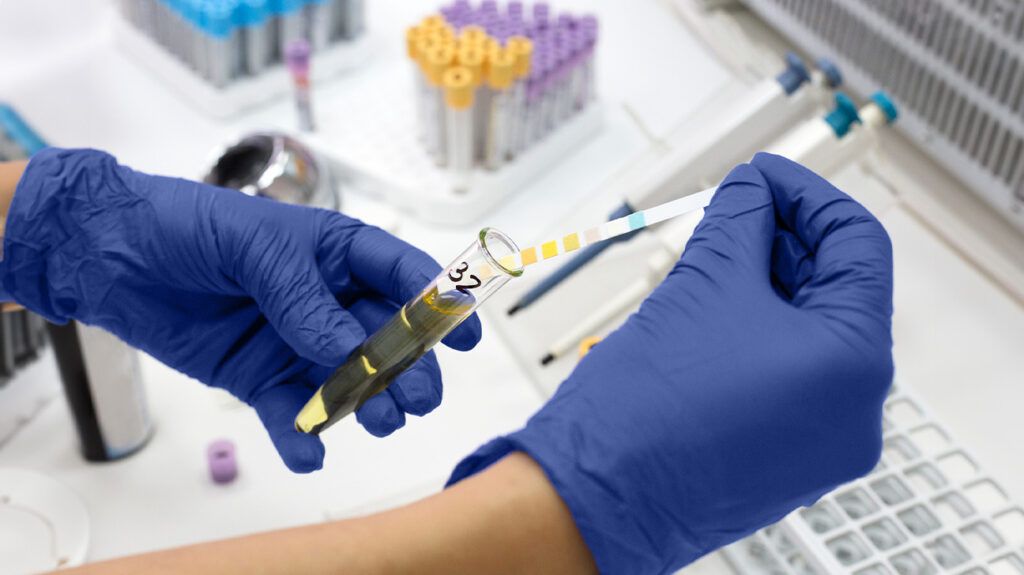The stages of chronic renal failure (CRF) or chronic kidney disease (CKD) refer to how well a person’s kidneys are working. Doctors can use blood and urine tests to determine the CRF stage.
The kidneys have many important functions, such as removing waste products from the body and helping produce red blood cells. Chronic kidney disease (CKD) or chronic renal failure (CRF) involves a reduction in kidney function.
CRF staging refers to how well the kidneys are functioning.
This article discusses each stage of CRF and how the process of staging works.

Each stage of CRF refers to how well the kidneys can function.
Doctors can determine a person’s CRF stage with a glomerular filtration rate (GFR) test, a blood test that measures how well the kidneys can filter blood.
If a person’s GFR is low, this may mean their kidneys are not filtering waste products and water from the blood at an expected rate.
Doctors can work out estimated GFR (eGFR) using a formula, or they may be able to assess a measured GFR (mGFR) using specific tests and imaging. eGFR can vary depending on factors such as age and race, but generally, a doctor may consider a GFR of 60 or less to be low.
Sometimes, a doctor may need to consider other factors when staging CKD.
According to the National Kidney Foundation, a person with stage 1 CKD will have an eGFR of 90 or higher and have had kidney damage for 3 months or longer. A doctor can often tell if a person has kidney damage by testing the amount of the protein albumin in their blood and determining their urine albumin-creatinine ratio (uACR).
A person with a uACR lower than 30 has a lower risk of their condition worsening than someone with a higher uACR, which indicates the level of kidney damage.
Generally, a person with stage 1 CKD will not have any symptoms. However, possible symptoms may include:
- high blood pressure
- swollen hands or feet
- blood in the urine
- chronic urinary tract infections (UTIs)
Learn more about the effects of low albumin levels.
A person with stage 2 CKD will have an eGFR between 60 and 89 and will have had kidney damage for 3 months or more.
Similarly to stage 1, the level of kidney damage indicates the likelihood that a person’s condition will worsen.
Like stage 1, stage 2 CKD does not usually cause symptoms.
Doctors classify Stage 3 CKD into stages 3a and 3b, depending on the level of loss of kidney function.
The risk of complications is low for both sub-stages. However, the risk is slightly lower for stage 3a than 3b.
Possible complications include:
Stage 3a
A person with stage 3a CKD will have mild to moderate loss of kidney function and an eGFR between 45 and 59 for 3 months or more.
At this stage, a doctor can confirm the diagnosis of CKD with a blood test alone, without a uACR test. People with stage 3a CKD have an increase in the risk of developing heart disease and worsening CKD.
A person may or may not have any symptoms, but possible symptoms include the following:
- dry or itchy skin
- urinating less or more often than usual
- unintentional weight loss
- nausea
- loss of appetite
- fatigue
Stage 3b
At stage 3b, a person is at high risk of both worsening CKD and heart disease.
People with this stage of CKD are also more likely to develop high blood pressure. They will have moderate to severe loss of kidney function with an eGFR between 30 and 44 for 3 months or more.
Symptoms often become more noticeable at this stage. In addition to the above stage 3a symptoms, people with stage 3b may experience:
- difficulty concentrating
- numbness or swelling in the hands, feet, legs or ankles
- shortness of breath
- vomiting
- muscle aches or cramps
People with stage 4 CKD have the highest risk of kidney failure and a very high risk of developing heart disease. They have severe loss of kidney function with an eGFR between 15 and 29 for 3 months or more.
At stage 4, a person is also at risk of developing hyperkalemia or high potassium levels in the blood.
Additional symptoms a person may experience at stage 4 include:
- fishy or urine-like (ammonia) smelling breath
- difficulty sleeping
If a person has stage 5 CKD, they have kidney failure, also known as end stage renal disease (ESRD), meaning their kidneys have lost almost all function.
The treatments available at this stage are kidney transplants or dialysis.
At this stage, a person’s eGFR will be less than 15 for 3 months or more.
In some cases, a person may choose a conservative care approach instead of a kidney transplant or dialysis.
Conservative care involves managing symptoms and maintaining as much quality of life as possible. According to a 2023 article, between
Doctors can use several tests to determine what stage of CKD a person has.
Tests include:
- urine albumin-creatinine ratio (uACR) test
- blood tests to assess GFR
- dipstick urine test for albumin
A doctor can use the information from a person’s GFR or uACR to determine the CKD stage.
Doctors use the stages to indicate kidney function levels in people with chronic renal failure. People with lower stages of CKD are at risk of fewer complications and may experience few or no symptoms.
More advanced stages of CKD put people at risk for complications such as heart disease.
Stage 5 is the final stage of CKD and indicates kidney failure. This means a person’s kidneys have lost almost all function, requiring a kidney transplant or regular dialysis.
